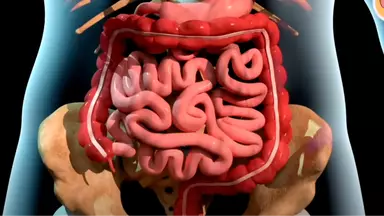A disturbing simulation has shown just how a person dies from cancer.
An estimated 618,120 people will die of cancer in the US this year, with lung cancer being responsible for the most deaths followed by colorectal cancer and pancreatic cancer according to the NIH.
However, while cancer can certainly lead in death, it’s not necessarily the disease that causes someone to die, according to Dr Paulien Moyaert, with the cancer creating a host of taxing side effects on the body.
Explaining the grim process, the medic has unveiled a horrifying 3D simulation of the process on YouTube which walks through the disturbing stages of how cancer might kill you.
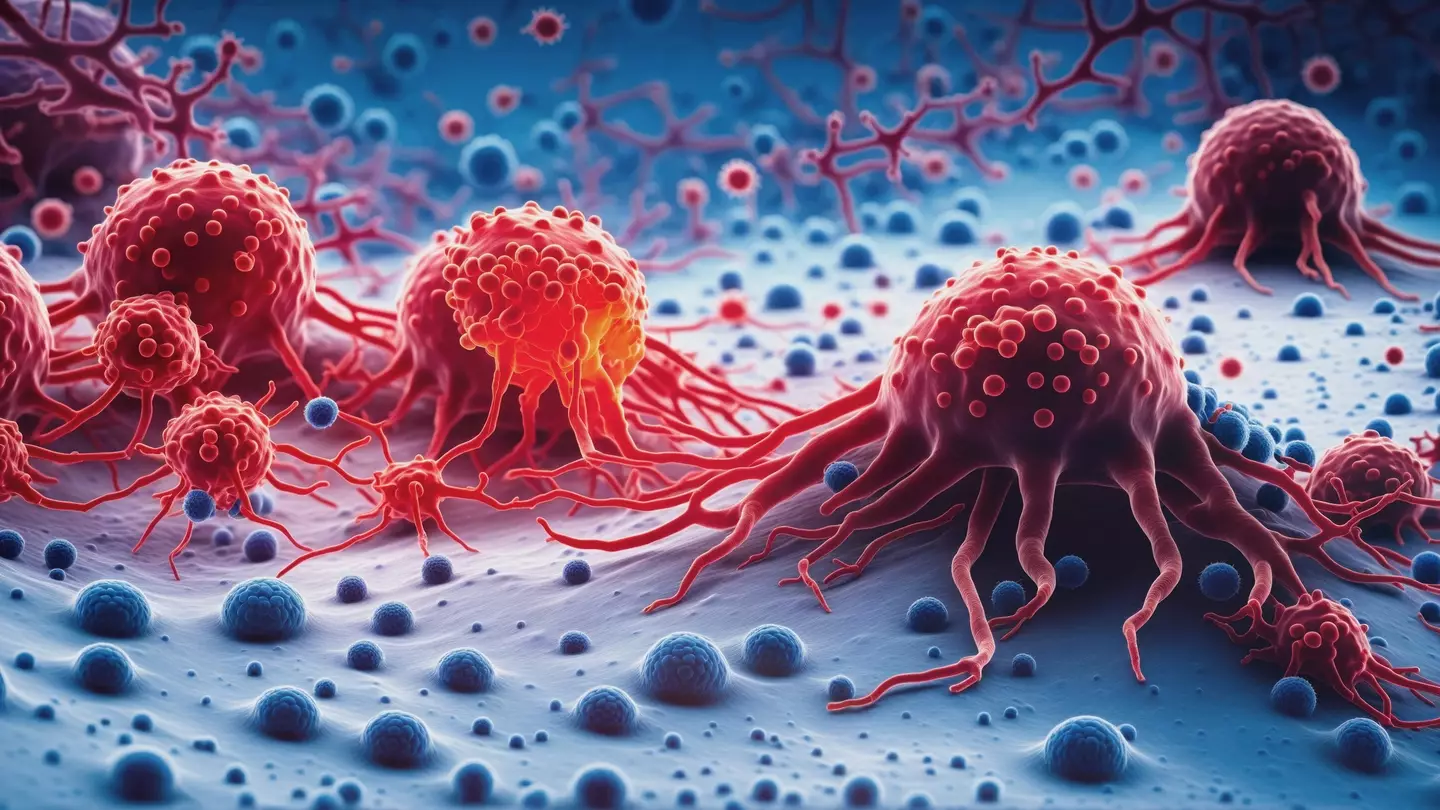

It all starts with a single cell (Getty Images)
Metastatic cancer
The almost four-minute-long video kicks off by explaining metastatic cancer, described as ‘the most lethal’ as it involves a single cell breaking off, migrating and forming a tumor.
This tumor can then target any organ and prevent it from functioning.
Organ failure and pancreatic cancer
As an example, the scientific video shows how the cancer can grow and lead to organ failure – like if it goes into the digestive system, it can prevent digestion and the absorption of food.
A tumor can also block faeces from being expelled, which can perforate and quickly turn fatal without surgery.
Another example the simulation gives is when cancer affects the pancreatic ducts, horrifyingly causing the pancreas to ‘digest itself.’
Pancreatic cancer is therefore considered one of the most painful and deadliest types of cancer.
Lung cancer
When cancer is in the lungs, the simulation reveals patients can die from asphyxiation, where there’s not enough oxygen around the body.
This is the most common cause of death in lung cancer cases, the video reveals.
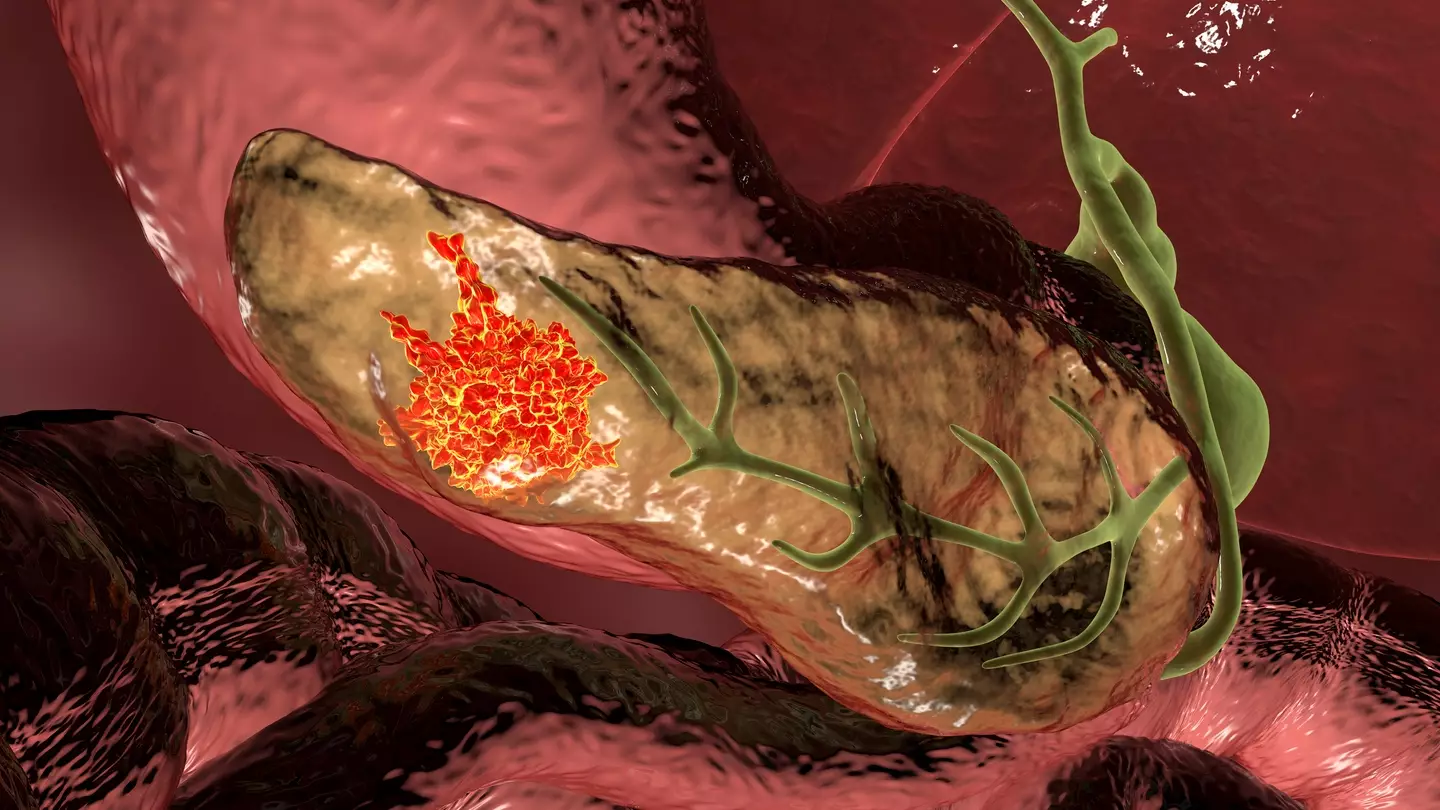

Pancreatic cancer is considered one of the most painful types (Getty Images)
Infection
The second most common cause of death comes from infections.
“Having cancer impairs immunity,” the explainer continues, “and chemotherapy compounds the problem by suppressing the bone marrow – the factory where white blood cells are produced.”
Bone marrow
Not only can bone marrow be impaired by chemotherapy, but the ‘infiltration of cancer cells’ as well.
“When cancer grows in the bone marrow, there will eventually be inadequate bone healthy bone marrow to make blood cells,” the simulation shows.
Implications for affected bone marrow include anemia, a drop in white blood cells – which typically fight infection and keep bacteria under a control – and a decrease in platelets which prevents the body from controlling any abnormal bleeding.
Cachexia
The video explains cachexia involves ‘wasting’ away – where toxins released by the cancer cells suppress appetite and affect the digestion of food.
This is why many cancer patients suffer rapid weight and muscle loss.


It explains why cancer patients drop a lot of weight in a short space of time (Getty Images)
This alone can prove fatal, as the video explains: “Cachexia is estimated to occur in 50 percent of all cancer patients and is thought to directly cause up to 30 percent of cancer deaths because of heart of respiratory failure related to muscle loss.”
It can also be attributed to 50 percent of deaths in patients with gastrointestinal tract cancers and up to 80 percent of deaths in patients with advanced pancreatic cancer.
Treatment can control it for ‘a long time’ but if the cancer continues to grow, ‘it can become too much for the body to cope with.’
At this stage, patients might be advised to focus on comfort and the quality of life they have left.
“No one with cancer should die in pain,” it adds.


Surgery can help but it is difficult (Getty Images)
Why is surgery difficult?
The simulation then answers why surgery to treat or expel cancer is particularly difficult.
It explains: “Because the major organs are so vital for life, these are all parts of the body that are had to operate on. Assuming the operation is successful and you remove the tumor without lasting damage to the organ, the tumor may grow back.
“All it takes is a few cells of the original tumor remaining in the body.”
That’s why chemo as well as surgery is vital to treat the disease.
If you’ve been affected by any of these issues and want to speak to someone in confidence, contact the American Cancer Society on 1-800-227-2345 or via their live chat feature, available 24/7 every day of the year.
Featured Image Credit: YouTube/@dr.paulinemoyaert
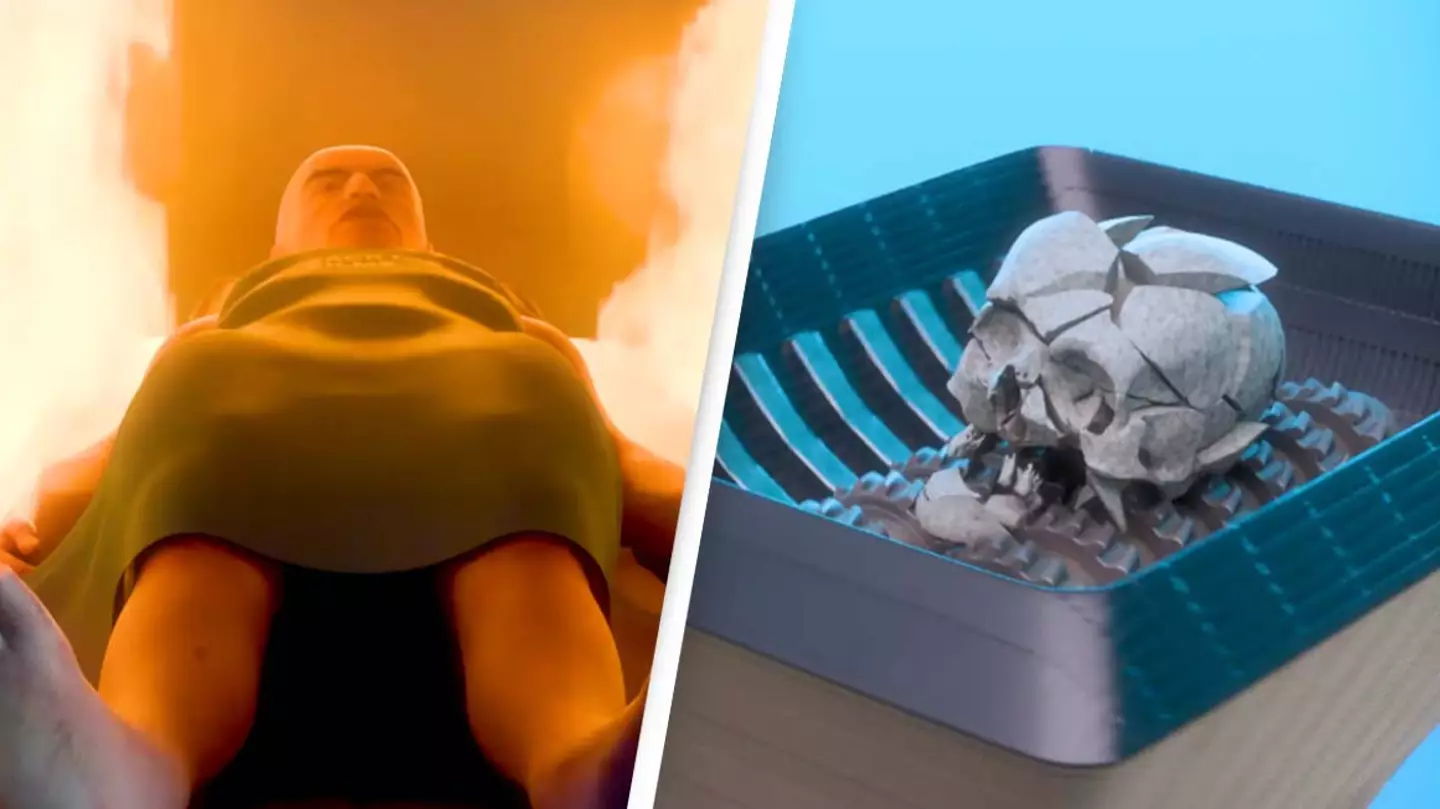

An interesting video has been created demonstrating exactly what happens during cremation, and if you know someone whose been through the process recently you may want to look away.
The simulation isn’t exactly gruesome but it is shocking and takes you through the step-by-step process of incineration. Also, there’s definitely one step that will surprise you and may make you reconsider your end of life plans.


Cremation is a popular alternative to the traditional burial (Getty stock image)
If we’re lucky enough we’ll live to a grand old age, but you don’t need to be old to arrange what happens to you when you die – you can actually do that now, just create a will and jot it down there.
There are many alternatives to your traditional burial – which involves being buried in a casket six foot under with engravings on a headstone.
One of those is a natural burial where bodies are placed in biodegradable coffins, usually made of materials like wood and bamboo, and placed six feet under the surface with no headstone.
It then, of course, allows your body to naturally decompose. The process helps protect natural habitats and encourages biodiversity. So if you’re environmentally conscious, you may opt for this one day.
But the most popular alternative is cremation, which YouTuber Zack D.Films talks through in a recent short video.
He says: “When you die your body is placed in a specially designed furnace that can reach 1800 degrees.
“Now the intense heat reduces the body to bone fragments and ashes within about two to three hours.”
Okay, it’s probably what we all though happened to us, but the next bit completely caught me off guard.
The content creator continued: “Afterward, a magnet is used to remove any metal objects like surgical pins, hidden piercings and dental implants.”
Now, I’m not sure about you, but hearing that a magnet is placed over the ashes to extract piercings, pins and teeth made me feel a bit queasy.


A woman scatters her loved one’s ashes (Getty stock image)
I think it’s probably the realisation that all that is left of this person is a gold tooth, or a filling, for example – poof… gone.
He then explains the final step in cremation: “Then the remaining bone fragments are processed into a fine powder, which is combined with the residual ash, and placed in an urn.”
I’m not sure about you but I’ve got fillings, and the thought of the only thing remaining of me is the teeny tiny specs of metal is a bit horrifying.
God, that sounds awful!
What do you want to happen with your body when you pass?
Featured Image Credit: YouTube/Zack D. Films
Topics: Environment, Religion, Science, YouTube, Weird


A doctor has revealed the six common cancer symptoms everyone under the age of 50 should be aware of.
Although the risk of cancer increases as we get older, with the average age at diagnosis around 68, doctors have been reporting a dramatic rise of cases in the under 50s.
According to researchers at Brigham and Women’s Hospital at Boston, cancer among the younger cohort may be foreshadowing an ’emerging pandemic,’ reports Cancer Center.
Of the types on the rise include breast cancer, lymphoma and colorectal cancer, as well as testicular, kidney and pancreatic, and doctors don’t know why.
That’s according to Dr Paul Oberstein, a professor of medicine at New York University, who took to the New York Post to reveal the six emerging symptoms that young people should look out for as a possible early sign of the disease.


Cancer is on the rise for people under 50 (Getty Images)
Weight loss
Losing weight deliberately through diet and exercise is a different ballgame to those who suddenly drop the pounds without any material change to their lifestyle.
Dr Oberstein said a common symptom among cancer patients is unintentional weight loss as well as feeling full quickly after eating, a change in energy levels and/or changes to sleep patterns.
“These are very general things, and usually they don’t mean cancer, but sometimes they could be the first sign that something is wrong,” he said. “The most prominent of these symptoms is unintentional weight loss. Usually, people don’t lose weight without effort.”


Sudden weight loss without effort can be a concern (Getty Images)
Night sweats and chills
On the subject of sleep, some nighttime changes like night sweats or unexplained chills ‘could be a sign of something brewing in the lymph system, such as lymphoma.’
The doc says these changes could also ‘signal something else’ and people should be particularly mindful of any swelling in the glands under the armpits or where the lymph nodes are.
Bowel changes
The doc said there are some bathroom abnormalities that could be a red flag for possible colon cancer.
He wrote: “If the stool looks different — it’s darker, a different caliber or blood is present — that’s a concern.”
“We’ve tracked the colorectal cancer increase in the US and around the world over the last decade. We think the rise is related to environmental and dietary changes, but we have not yet pinpointed the exact cause,” he added.


Bowel changes is another one to look out for (Getty Images)
Lumps
Breast cancer is one of the most common cancers in people under 50, accounting for about 30 percent of all new female cancers every year in the US.
Rates are on the rise overall (by one percent) and ‘a little steeper’ among women under the age of 50 (1.4 percent), reports the American Cancer Society, with trends suggesting excess body weight, not having children or having a child after the age of 30.
Dr Oberstein says the clearest indicator is lumps, changes in skin color or breast discharge.
Another common increase is testicular cancer, which can be caught similarly from feeling a lump or abnormality in the testicles, which may or may not be painful.
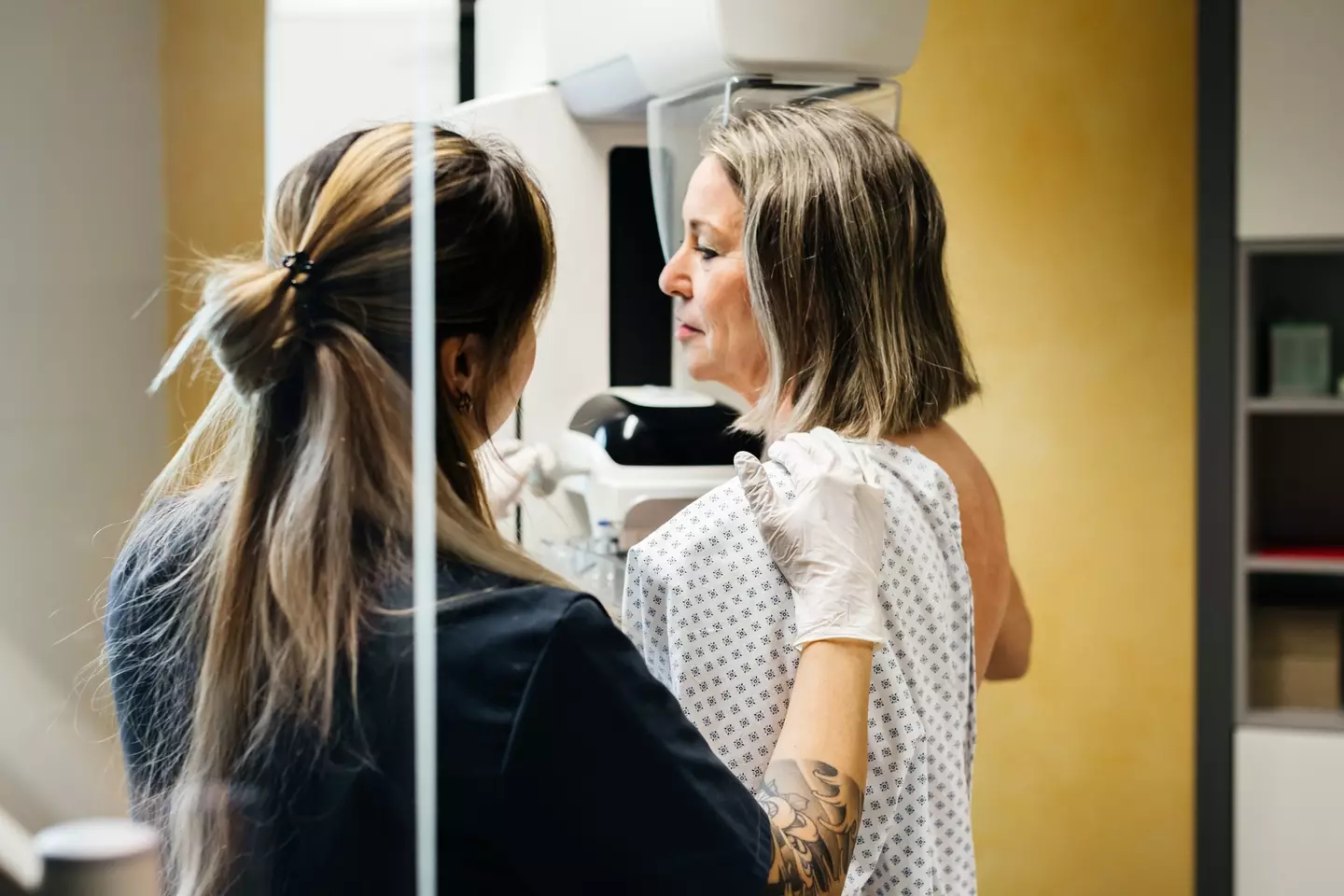

Breast cancer can be detected by abnormalities like lumps or a change in skin color (Getty Images)
Bleeding
Blood can also show up in various concerning places.
“For example, blood in the urine can be an early sign of a problem in the bladder or kidneys,” the doctor continued. “Vaginal bleeding or bleeding after intercourse could indicate cervical cancer or potentially even endometrial cancer and should be checked out.”
The good news, he says, is that cervical cancer has become less common in younger adults.
Skin changes
Cancer of the skin (melanoma) is the most common of all cancers in the US.
Dr Oberstein warns early signs can be caught through abnormalities in the skin with anything new or changing, which he says should prompt a discussion with a healthcare professional.


Melanoma is the most common cancer in the US (Getty Images)
How to lower cancer risk
There are ways to mitigate against the risk of cancer, by improving diet, quitting smoking and increasing exercise, the doctor states.
Doctor’s appointments for any concerning systems and cancer screening are also at the top of the list, he adds.
Women under the age of 50 can book for a mammogram to check for breast cancer and a pap smear to screen for cervical cancer.
Meanwhile, anyone aged 45 and over can book a colonoscopy for colon cancer and a prostate cancer screening can also be recommended.
For those with family history of cancer, screening for thyroid and blood cancers can also be booked.
Featured Image Credit: Getty Images/Tom Werner
Topics: Cancer, Health, Breast cancer, US News


A professional boxer has died at just 25 after claiming doctors ‘dismissed’ her cancer symptoms for months.
Georgia O’Connor from Durham, UK, was a decorated Team GB amateur boxer at junior level, going on to win gold at the Commonwealth Youth Games in 2017.
The rising star revealed just in January this year that she had been diagnosed with ulcerative colitis, a chronic inflammatory bowel disease, and cancer that was tragically terminal.
Revealing her diagnosis on Instagram, she wrote at the time: “There’s really no easy way to say this, but I have cancer.


The young woman has died (Nigel Roddis/Getty Images)
“Now that’s out the way, it’s time to expose the absolute incompetent RATS that have allowed this to happen.”
O’Connor stated she was in ‘constant pain’ for 17 weeks and made several trips to hospital and doctor’s appointments.
She said she knew ‘something was seriously wrong’ and that she was already considered a cancer-risk due to her colitis and PSC (primary sclerosing cholangitis).
“But not one doctor f***ing listened to me,” she continued. “Not one doctor took me seriously. Not one doctor did the scans or blood tests I begged for whilst crying on the floor in agony.”


O’Connor revealed in January she had been diagnosed with cancer (Instagram/georgiaoconnor_1)
“Instead, they dismissed me. They gaslit me, told me it was nothing, made me feel like I was overreacting. They refused to scan me. They refused to investigate. They REFUSED to listen. One even told me that it’s ‘all in my head.'”
The youngster made the heartbreaking admission that not only had her cancer spread but doctors found potentially fatal blood clots in her lungs.
She continued to rant about the shortcomings of the NHS, adding: “They could have done something before it got to this stage.”
“They can say it’s terminal all they want. They can tell me I’m going to die. But after taking 17, SEVENTEEN weeks to even figure out what was wrong with me, why the f*** should I believe them?”


The boxing star in March this year (Jordan Peck/Getty Images)
Celebrating her 25th birthday a month later, O’Connor revealed in a space of a few months she had suffered a miscarriage and was diagnosed with incurable cancer.
“I have what people consider the worst disease known to man, but I’m still able to smile, laugh and be myself,” she penned.
O’Connor then tied the knot with her partner, Adriano, just two weeks ago, writing in her final post on Instagram: “09.05.2025. The day I married the love of my life.”
Responding to the devastating news, a spokesperson for the Newcastle upon Tyne Hospitals NHS Foundation Trust issued the following statement: “We are very sorry to hear the news about Georgia’s death and offer our sincere condolences to the family.
“We appreciate this a very difficult time, but when and if the family want to raise any concerns with us, we’d urge them to get in touch.”
Tributes have since been flooding in for the star, including from her former promoter, Ben Shalom’s Boxxer, who wrote: “We are heartbroken by the passing of Georgia O’Connor. A true warrior inside and outside the ring, the boxing community has lost a talented, courageous and determined young woman far too soon,” reports BBC.
“Georgia was loved, respected and admired by her friends here at Boxxer. Our thoughts are with her loved ones at this difficult time.”


Tributes have been flooding in (Nigel Roddis/Getty Images)
World champion Ellie Scotney, who was a buddy of O’Connor for a decade, described her as the ‘most beautiful human.’
“I was so blessed with not just a friend for 10 years, but a sister for life,” Scotney said.
“Even when life was on a timer, you never let anything dim that light of yours. A smile that never ever fades, and a heart that will forever live on in so many ways.
“There was nothing you couldn’t do, the world at your very feet no matter what room you entered.”
England Boxing also said O’Connor was a ‘gifted boxer’ and ‘beloved member of the amateur boxing community.’
If you’ve been affected by any of these issues and want to speak to someone in confidence, contact the American Cancer Society on 1-800-227-2345 or via their live chat feature, available 24/7 every day of the year.
Featured Image Credit: James Chance/Getty


Medics have issued a warning about a little-known change to your fingertips which could be an early indication of cancer.
According to the American Cancer Society, lung cancer stands as the second-most common cancer in men and women in the US, excluding skin cancer.
The danger of it is that often symptoms don’t tend to appear until harmful cells have spread throughout the body and are often respiratory when they do.
Well-documented signs of the deadly condition include wheezing, a persistent cough and breathlessness, as well as blood or phlegm.
But medics are now warning there is actually a lesser-known red flag that can be spotted in a minute detail on our hands.


They are warning to check your fingers and nails (Getty Images)
Health professionals have issued a dire warning for people to pay attention to any changes in their hands, specifically swelling in the fingers and a change to the nail shape, which has been linked to the disease.
The condition, known medically as clubbed fingers, appears as changes to the nails on our fingers and toes, and is mostly a symptom than a disease itself, the Cleveland Clinic notes.
How this happens is thought to occur as a result of substances being released by lung tumors that inflame the bones in fingers, as well as toxic chemicals that the body produces that develop the cancer.
A former patient only had the clubbed fingers symptom when they were diagnosed and is likewise warning others to look out for the tell-tale sign.
Brian Gemmell, a fitness instructor from Scotland, UK, told The Mirror: “Go and see your doctor—that’s what a GP is for.”
“Go as soon as you can,” he urged.
Gemmell claimed he never suffered a cough and was ‘feeling healthy.’
He added: “I wasn’t coughing up blood, I wasn’t breathless. My one and only symptom was clubbing of the fingers, where all your fingers swell up and when you put your fingers together you can’t see a diamond.
“That was my only symptom. Straightaway, my GP had an idea of what it was. He sent me straight for a chest X-ray and referred me to a respiratory consultant.”
To test yourself if you have finger clubbing, medics say there is a screening known as a Schamroth window test that can be carried out from home.


Most signs of lung cancer are respiratory (Getty Images)
The test involves pressing two opposing fingers against each other to check for a diamond shape.
If you don’t see a small diamond, it could be an indication of finger clubbing.
The warning comes as a study in 2012 by Dr Malay Sarkar, an India-based lung cancer specialist, discovered lung cancer is the primary cause of finger clubbing, linked to almost 90 percent of cases, while nail clubbing affects around five to 15 percent of people with lung cancer.


Coughing isn’t the only sign (Getty Images)
However, Cancer Research UK adds that not everyone with finger clubbing will have lung cancer but still advises those who do to seek medical advice.
Dr Helen Piercy also told the news outlet: “If you notice any signs or symptoms that concern you, see your GP.
“First phone for an appointment. You will be assessed. You will be invited in, if you need to be seen face-to-face. Don’t be afraid. Pick up the phone.”
